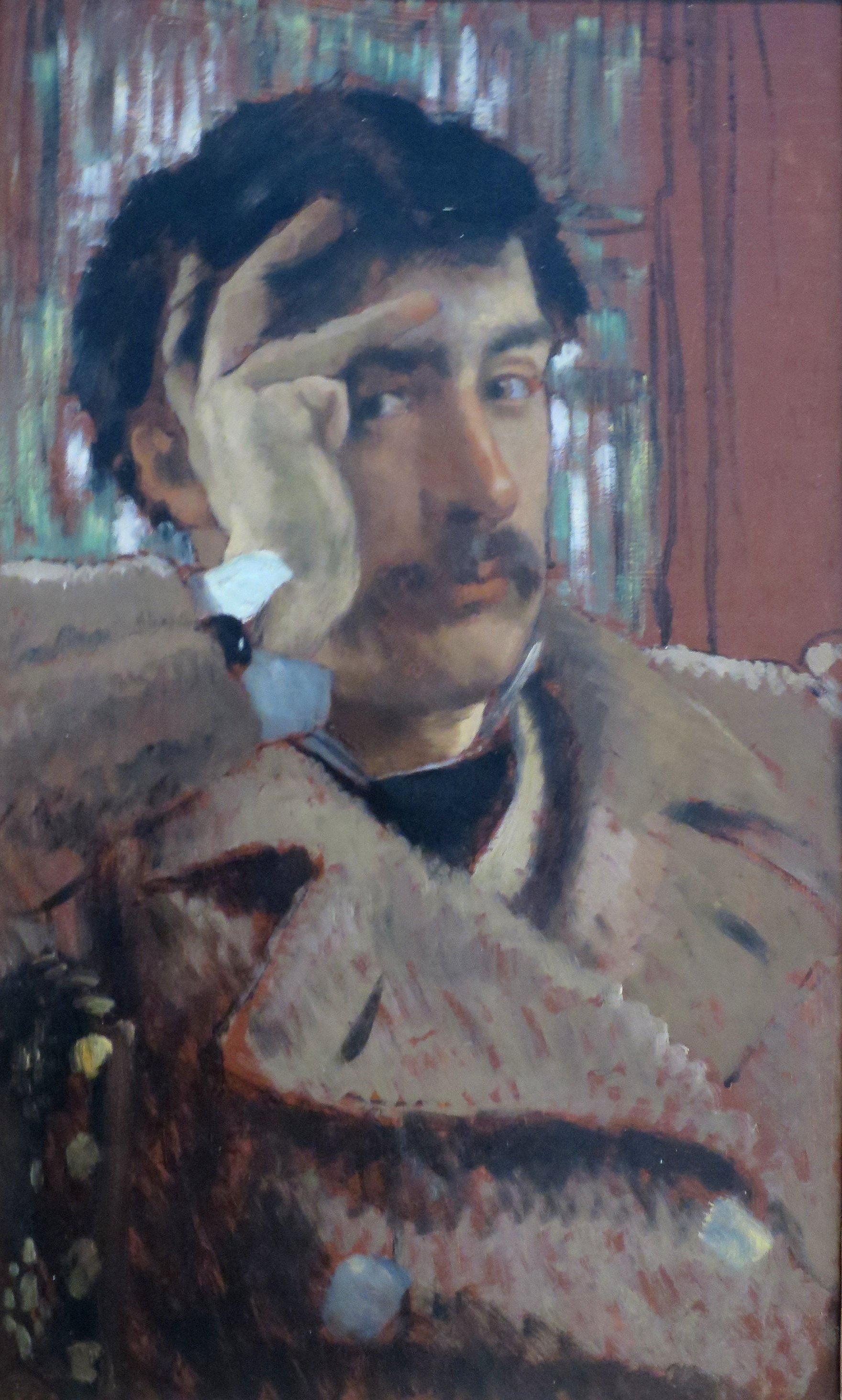
James Tissot
Jacques Joseph Tissot (French: [ʒɑk ʒozɛf tiso]; 15 October 1836 – 8 August 1902), better known as James Tissot (/ˈtɪsoʊ/), was a French painter, illustrator, and caricaturist. He was born to a drapery merchant and a milliner and decided to pursue a career in art at a young age, coming to incorporate elements of realism, early Impressionism, and academic art into his work. He is best known for a variety of genre paintings of contemporary European high society produced during the peak of his career, which focused on the people and women's fashion of the Belle Époque and Victorian England, but he would also explore many medieval, biblical, and Japoniste subjects throughout his life. His career included work as a caricaturist for Vanity Fair under the pseudonym of Coïdé.[1]
James Tissot
8 August 1902 (aged 65)
- Painter
- illustrator
- artist
Tissot served in the Franco-Prussian War on the side of France and later the Paris Commune before moving to London in 1871, where he would find further success as an artist as well as meet Irishwoman Kathleen Newton, who came to live with him as a close companion and muse until her death in 1882. Tissot maintained close relations with the Impressionist movement for much of his life, including James Abbott Whistler and friend and protégé Edgar Degas. He was awarded the French Legion of Honor in 1894.[2]
Early life[edit]
Jacques Tissot was born in the city of Nantes in France and spent his early childhood there. His father, Marcel Théodore Tissot, was a successful drapery merchant. His mother, Marie Durand, assisted her husband in the family business and designed hats. A devout Catholic, Tissot's mother instilled pious devotion in the future artist from a very young age. Tissot's youth spent in Nantes likely contributed to his frequent depiction of shipping vessels and boats in his later works. The involvement of his parents in the fashion industry is believed to have been an influence on his painting style, as he depicted women's clothing in fine detail. By the time Tissot was 17, he knew he wanted to pursue painting as a career. His father opposed this, preferring his son to follow a business profession, but the young Tissot gained his mother's support for his chosen vocation. Around this time, he began using the given name of James as an Anglicisation, becoming commonly known as James Tissot by 1854; he may have adopted it because of his increasing interest in everything English.[2][3]
After completing the Woman of Paris in 1885 Tissot experienced a religious vision at the Church of St. Sulpice, leading him to revive his Catholic faith and spend the remainder of his life making paintings about biblical events.[39] Moving away from the Impressionists' and Post-Impressionists' intent to create art that reflected a changing, modern world,[40] Tissot returned to traditional, representational styles and narratives in his watercolors. As part of this artistic effort Tissot traveled to the Middle East in 1886, 1889, and 1896 to make studies of its landscapes and cultures, which would come to distinguish his series from contemporary Biblical art through its "considerable archaeological exactitude"[39] in striving for accuracy rather than religious emotion.[13] His series of 365 gouache illustrations showing the life of Christ were shown to critical acclaim and enthusiastic audiences in Paris (1894–1895), London (1896) and New York (1898–1899), before being bought by the Brooklyn Museum in 1900.[39] They were published in a French edition in 1896–1897 and in an English one in 1897–1898, bringing Tissot vast wealth and fame. During July 1894, Tissot was awarded the Legion of Honour, France's most prestigious medal.[2]
Tissot spent the last years of his life working on paintings of subjects from the Old Testament.[41] Although he never completed the series, he exhibited 80 of these paintings in Paris in 1901 and engravings after them were published in 1904.[12]









